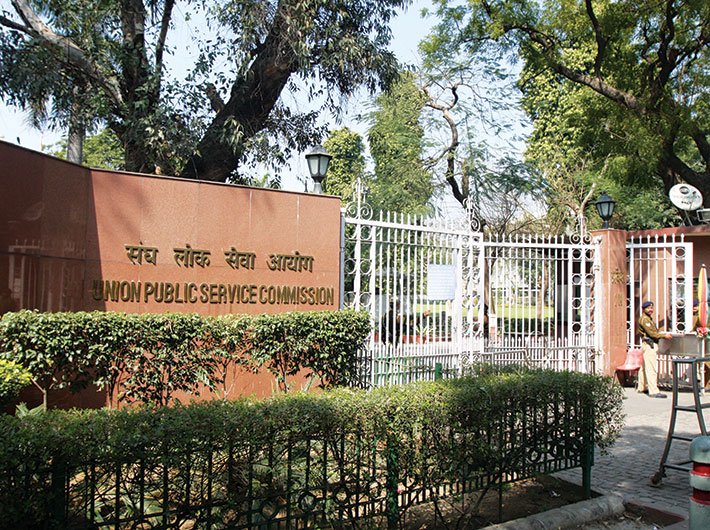A petition filed by a 2012 batch officer of armed forces headquarters civilian staff service raises serious question on the functioning of the UPSC
Amid a series of admission and recruitment scams in many states in recent years, the union public service commission (UPSC), the central agency in charge of conducting the civil services and allied examinations, had so far managed to keep a clean image of itself. That is not so anymore.
A petition questioning UPSC’s fairness is pending before the central administrative tribunal (CAT). Komal Ganatra, a 2012 batch officer of the armed forces headquarters civilian staff service (allied civil services), has alleged that rules were tweaked to clear two candidates under the disability quota. But for this, she alleges, she would have been selected for the Indian administrative service (IAS).
Her petition challenges the selection of Bihar cadre IAS officer Shailza Sharma and Lipin Raj of the Indian railway personnel service (IRPS); both of the 2012 batch. Sharma and Raj are currently serving their probation period.
The two had qualified the civil services examination of 2012 under the visually handicapped category. Candidates applying in this category have to go through a medical examination before a board soon after clearing the written test. A medical board assesses the extent of their disability to find out if they fulfil the criterion laid in the rules. The candidates can appeal against the board’s decision to an appellate board, the decision of which is final.
Ganatra, in her petition, has alleged that rules were bent for Sharma and Raj, and a special board was set up, allegedly under instruction from the higher-ups, after they had exhausted their right to appeal.
Sharma’s case was being followed up by the department of personnel and training (DoPT). At one stage the DoPT had referred the matter to the director general of health services (DGHS) who, allegedly in violation of norms and precedents, had constituted a special board to examine the disability quotient of Sharma and Raj. The special board held that Sharma and Raj were eligible for the physically handicapped (PH) category. This contradicted the reports of two boards that had examined them before.
Ganatra has questioned the DoPT’s move of constituting a third board for the two. “In the past, never has any candidate been permitted to go for second appeal. Why this favour was done to these two candidates?” she asks.
As per the DoPT records, Sharma had appeared four times for the civil services exams under the general category, exhausting the number of permitted attempts. In 2012, she had applied the fifth time – under the visually handicapped category – and appeared for the exam. Sharma, by the way, was trained as a veterinary surgeon. Ganatra has questioned how visually handicapped person could be trained as a veterinary surgeon.
One of the file notings of DoPT says, “There is no provision for further appeal against the finding of appellate medical board.”
Former director general of health services Dr RK Srivastava told Governance Now, “I never constituted any special board in my tenure. Always two boards were constituted and they were the competent authority to decide on the physical handicap of candidates. Once they decided, it used to be final.”
The then minister of state, V Narayanasamy, had written on the file: “Why is this permission of second appeal being given?” Yet, both Sharma and Raj were permitted to appear before a medical board, especially constituted for them, for reassessment of their eligibility under PH quota.
“This practice of sending the representation of the candidate for further medical examination again and again should have been avoided. In the previous case of Shailza Sharma also, the same mistake was done,” says Narayanasamy’s notings on the file.
However, determined to get justice, Ganatra filed several applications under the Right to information (RTI) Act. In one, she sought details of medical reports of the PH category civil services candidates between 2005 and 2013. The reply from government was stunning. The government admitted that several relevant filed had gone missing from the office of DoPT. The file numbers 13014/4/2010-AIS-1, 13014/1/2008-AIS-1, 13014/1/2009-AIS-1, 13014/4/2008-AIS-1, 13014/5/2011-AIS-1, 13014/4/2012-AIS-1, 13014/3/2009-AIS-1, and 13014/3/2012-AIS-1 relating to medical examination (during 2005-13) were not traceable.
Governance Now tried to speak to the DoPT on the missing files. But no authority would comment on the matter. However, we could dig out several cases – which must be listed in the missing files – in which candidates declared unfit for the PH category by the medical boards were not permitted to go for a second appeal.
In 2009 Yeshwant GV’s candidature under the visual disability category was cancelled as his disability was 30 percent as against the basic criterion of more than 40 percent disability. Yeshwant appealed to the DGHS that he had a case of visual and locomotor disability and sought reassessment. A medical board had confirmed his multiple disabilities. However, the UPSC rejected his candidature saying there was no quota for people with multiple disabilities.
Yeshwant’s case was studied by the then minister of social justice in 2009 too. The ministry’s ruling also went against him. Currently, the case is also pending before the CAT.
In the 2006 civil services list, Mausami Omar (rank 469) and Ritesh Kumar Singh (rank 468) had applied in the locomotor handicapped category. Both were found ineligible for the category, both by the medical board and the appellate authority. Their candidature was cancelled.
The UPSC had found Abhimanyu Yadav (2007) and Vipul Mesariya (2011) did not fulfil the criterion under PH category. Both of them were denied permission for a second appeal.
However, DoPT conveniently cited the Yeshwant’s case to permit Sharma to appeal against the appellate board’s decision on her eligibility under the PH category. The DoPT has said that since Yeshwant’s case had gone to court, dragging the government into litigation, therefore, to be on the safe side, Sharma should be given a chance to prove her case. With this logic, DoPT referred Sharma’s case to the DGHS. Sharma was asked to furnish reports in support of her claim of disability after which the special board upheld her eligibility.
Ganatra has been fighting the case in the CAT for two years. She says 30 dates for hearing have lapsed but Sharma and Raj have not appeared.
“This is a delaying tactic so that they can complete their probation period. But we have presented our case and the CAT will definitely look into the matter,” says the petitioner’s lawyer Santosh Kumar Rungta. His argument before the CAT is that Sharma and Raj were deliberately allowed to appeal against the appellate court’s decision.
Ganatra, in the meanwhile, has also managed to get more information from the Uttar Pradesh government on Sharma’s disability status. In response to her application under RTI, the UP government has said there is no record of Sharma being a visually disabled person while she was working as a veterinary surgeon in Bagpat.
Sharma and Raj could not be contacted for their comments despite repeated attempts.
pankaj@governancenow.com
(The story appears in the January 01-15, 2016 issue)
Update: On November 22. 2018, the principal bench of the Central Administrative Tribunal gave its final verdict on this case (OA No. 3420/2013). It pronounced that it did not find any basis to grant relief to the applicant, Komal Ganatra, and dismissed the petition. The order may be viewed here by entering the OA number and year in the appropriate slots.

